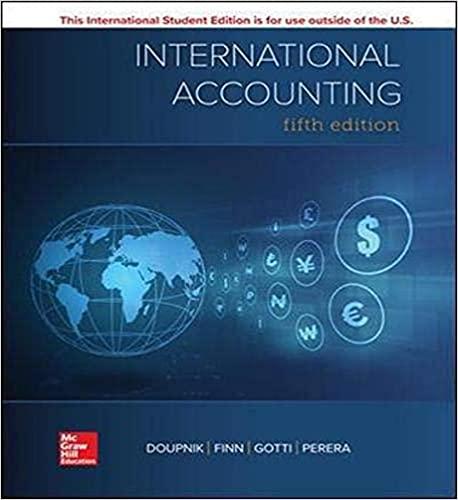Question
Ian Hammo is an audit senior at Datt & Prasad, a large international audit firm. He has been asked by the audit partner to evaluate
Ian Hammo is an audit senior at Datt & Prasad, a large international audit firm. He has been asked by the audit partner to evaluate the following audit risks of a major international client. For each of the audit risks described below complete the following:
(i) Identify the impact (i.e. increase or decrease) on the component(s) of audit risk affected and explain why it is an audit risk; and
(ii) Identify the prime audit assertion(s) to be tested and the key account balance(s) affected; and (iii) Identify the best audit procedure you would use to reduce the risk of material misstatement. NB: The situations are independent of each other and are to be treated separately in your answers.
(a) A subsidiary of the client is Estate Jewellers Ltd. The company specialises in jewellery from deceased estates, purchases pieces at auction, cleans and remodels them and then sells them to the general public. At year-end, Estate Jewellers expects to have around 2,000 pieces of jewellery on hand, ranging from small items worth $50 to more expensive items worth over $10,000. No two items of jewellery are the same. Because of the complex nature of the inventory, Estate Jewellers engaged an expert to provide a year-end valuation report. The expert used the client's inventory price list and amended according to his estimate of the (lower of cost or net realisable) value of each item.
(b) A subsidiary of the client manufactures and sells small tools. Notes in the working papers regarding controls included the following observations: The client's software doesn't allow a sale to be made unless a credit manager approves the sale with a credit check authorisation number to be included in the sale transaction. All new customers need to be approved before a debtor account can be opened, and the account has to be open before a sale can be processed to that customer. The system would prevent a sale being made if the sale took the account balance beyond the approved credit limit, unless authorised by the credit manager.
(c) In auditing the client's accounts payable processes, the audit manager has noted in the working papers that the client requires (1) the supplier code and invoice number to be input at time of processing payment, and (2) reconciliation of supplier accounts each month with an emphasis on detecting debit balances (i.e. accounts with more payments than invoices).
Step by Step Solution
There are 3 Steps involved in it
Step: 1

Get Instant Access to Expert-Tailored Solutions
See step-by-step solutions with expert insights and AI powered tools for academic success
Step: 2

Step: 3

Ace Your Homework with AI
Get the answers you need in no time with our AI-driven, step-by-step assistance
Get Started


